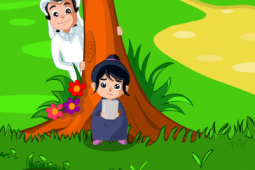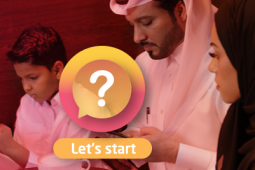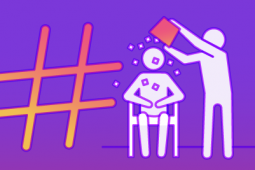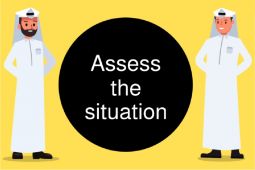How do i I deal with unpleasant messages or comments I get online?
Empowering Your Children Against Peer Pressure

Understand your child’s adolescent period and teen peer pressure:
Parents are often left wondering where they went wrong; why their child is moody and unhappy, and whether there will ever be a happy ending. None of us wants our children to be doing online risky behavior as watching inappropriate content or sharing shameful information or constantly be attached to the screen and pleasing others on social media to get a few more like. Whether or not this happens, it appears to depend on the influence of online peer pressure such as friends, followers, or the current trends.
Five different types of peer pressure that your teen is facing:
Peers are a powerful force in the life of a teenager. Whether they know it or not, teens face peer pressure almost constantly.
Types of peer pressure range from direct and confrontational pressure, to more subtle pressures to look, dress, and act like everyone else. So, peer pressure can be classified into five different types:
1.Negative group peer pressure:
The youth tend to be friends with those who are most like them. Different types of peer groups have unique abilities to encourage negative or positive behaviors to be done by their members and youth misconduct most often occurs in groups.
Online Group cliques are known by the pressure they exert on their members to conform to certain norms and trends. For example, an online group wants to show themselves doing unacceptable behavior by going live together, and this will push all the group members to do the same behavior and if some did not it will be perceived as a shame, and they will be bullied if they do not comply.
2. Direct negative peer pressure:
“We're going to mock our friend who posted a photo about her cake, that’s so boring. So, let us write comments telling her she is boring us with her photos!
Direct spoken negative peer pressure puts the teen on the spot through direct confrontation where his peers want to convince him to do things he shouldn't do. When peers resort to this type of direct pressure, it's difficult for teens to find an excuse to do the right thing without risking ridicule.
3. Unspoken, indirect peer pressure:
“Everyone has an iPhone and with these cool covers, I want one!”
When it seems like everyone else is doing something, e.g., dressing or acting in a certain way—-teens feel a tremendous pressure to go along with the crowd and be like everyone else. Most teenagers don't want to stand out as being different, but they want to fit in. No one even has to say anything to your child; merely observing their peers will create pressure to be like them.
4. Positive peer pressure:
“Let’s create a blog so we can support adolescents like us who are being bullied, and to spread awareness about the topic”.
Peer relationships can be a powerful positive influence on the lives of adolescents, where most of them discuss options with their friends before reaching a consensus about what to do, and rarely is one adolescent pressured to conform to the rest of the group.
Moreover, studies have shown that most friends discourage cyberbullying and other types of antisocial online behavior more than they encourage them. Teens choose friends who have characteristics or talents that they admire, which motivates them to achieve and act as their friends do.
Strategies to prevent peer pressure:
Stay calm and balanced while talking to your child; overreacting and exaggerating won’t help you in these situations. Listen to them and encourage solution-oriented steps that are realistic.
- Explain to them in a simple and clear manner about friends and social life; ask them if they trust their close circle of friends and talk about trust, what it means, how it is built with others, and provide real-life examples.
- When talking to them about social pressure, and how friends should accept them for who they are, give examples about yourself, so you can act as their role model in life.
- Be curious when talking to your child; show different ways of communicating to your child; for example, check with them their social media and ask them who they like to follow and why.
- Teach your child how to say “no” to others. You should understand it isn’t easy to say it, especially if the entire group is saying yes. If everyone is posting about a certain trend, or showing certain status on their profile, it is not easy not to imitate them, because they will lose “social online fame” or seem out of context. Teach your child to have the ability and strength to say “no” by stating his own rules of posting and how to show himself online.
How to support and empower your child against negative peer pressure?
Parents can't prevent their children from being exposed to negative peer pressure, but they can give them tools to help them resist. One of the most important tools is to remind children that they are unique individuals and that they should make the most of the things that make them different.
Also, you can follow the following tips:
- Keep a lookout for the symptoms of online peer pressure such as social withdrawal, talking about the online world with hate, or avoiding posting online or updating their profiles. Learn how to identify these symptoms properly in your child.
- Monitor your child’s social media activities by using parental controls; these are strongly advised.
- Boost their confidence so that they can face peer pressure bravely without being negatively affected.
- Encourage them to stay optimistic in all situations, and motivate them to take decisions themselves instead of succumbing to their peer’s pressure.
- Arm your child with ways to get out of difficult situations in which they are being pressured into doing something they know is wrong. It never hurts to rehearse potential scenarios so that the child will be prepared with an excuse (e.g., I have my own rules on social media and this not one of them, this post does not represent me nor my values, I prefer to write my post this way.....).
- You should serve as a role model to be imitated by your child in their future decision-making.
- Parents should build a close relationship with their children. This keeps lines of communication open and allows children to seek their parents’ help and support.
- You should be mindful of the types of friends they have on their social media, the pages they follow, and the groups they join.
- Encourage friendships outside of tight cliques and support new friendships with different people of all types by showing on social media different types of pages they can follow, or encouraging them to engage with friends who post positive posts and spread supportive and good behavior online.
- As a parent, you should work with the school to discourage negative peer pressure and encourage the formation of positive peer groups through Peer leader programs and through collaborative activities. Many schools train these peer influencers to know how-to guide or join in "support groups " or programs to stand up against violence. Also, these programs train the students to understand and empathize with others, set goals, identify problems, develop skills, make decisions, and communicate in order to lead, coach, and support other students, as these students play positive role modeling for other students.
Finally, do not forget that peer pressure never entirely disappears. Even adults feel pressure to conform in order to belong to a group. Finding a rational balance between accepting group beliefs and thinking for oneself is a challenge for everyone.
@2x.png)

























